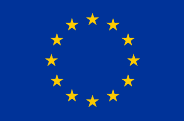
Safe non-food consumer Products in the EU and China
TUV sterilisers (also known as UV sanitisers or germicidal lamps) are appliances used to decontaminate surfaces or air from for example SARS-CoV-2, by different techniques. The product category comprises two major product groups:
This factsheet applies to devices connected to AC mains, devices connected through an adaptor, as well as battery operated devices.
The factsheet applies to devices that are intended for use in private homes, office or shop environments. It does not apply to devices that are intended for the health sector, e.g. hospitals.
A comprehensive guidance document has been produced which covers requirements applicable to products covered by this factsheet here
The most common hazards identified in this product sector are set out below.
1. Radiation risks:
2. Electrical risks
3. Thermal risks:
4. Mechanical risks:
This is a list of examples of common risks. However, the manufacturer has to carry out an assessment of the UV sanitiser that covers all relevant risks that may be associated with the product and actions taken to mitigate these risks where possible. A general definition of risk and its relationship to hazards can be found in the factsheet on Risk management.
Specific examples of measures taken against dangerous UV sanitisers offered for sale in the European Union are available on the Safety Gate website. Type ‘UV sanitiser’ into the free text search box (but without the quotation marks) and select the ‘electrical appliances and equipment’ Product Category to view notified examples. A better understanding of mistakes made in the safety assessment on the UV sanitiser or its manufacture can help avoid their repetition.
These products are governed mainly by the Low Voltage Directive (LVD). The Directive lays down the safety criteria that all UV sanitisers must meet before they can be marketed in the EU. UV Sanitisers must comply with the essential safety requirements set out in this Directive. More specific details can be found here.
In addition, if the electrical appliance and equipment is capable to communicate wirelessly (e.g. incorporates Bluetooth or Wi-Fi), it should meet the requirements of the Radio Equipment Directive.
Please also check the factsheet for Power Supplies, Chargers and Adaptors for safety requirements for the external power supply.
All other products (with a voltage rating below 50 V AC or 75 V DC) and risks not covered by the LVD, are governed by the General Product Safety Directive (GPSD). The Directive lays down that only safe consumer products can be marketed in the EU. UV sanitisers must comply with the general safety requirement set out in this Directive. More specific details can be found here.
“Harmonised standards” exist in the EU for electrical products. An electrical product complying with these standards is presumed to be in conformity with the essential safety requirements set out in the applicable legislation if the standards are referenced in the Official Journal of the European Union (OJEU). Further information on, and the list of harmonised standards for electrical products is available.
There is no single harmonised standard that specifically applies to UV sterilisers. Instead, the user has to combine relevant safety requirements from different standards:
EN 60335-1:2012
The standard describes the general safety requirements for household electrical appliances.
EN 60335-2-109:2010
The standard describes the particular safety requirements for UV radiation water treatment appliances. It must be read in conjunction with
EN 60335-1:2012.
In particular clause 7 and clause 32 describe safety requirements that are relevant for UV sterilisers. However, the standard covers other safety issues and manufacturers are strongly advised to consult the whole standard.
EN ISO 15858:2016
The standard describes minimum human safety requirements for the use of UVC lamp devices.
EN 62311:2008
The standard describes measurement methods and safety requirements related to human exposure restrictions for electromagnetic fields (0 Hz – 300 GHz).
EN 62471:2008
This standard describes measurement methods and safety requirements related to photobiological safety of lamps and lamp systems.
The most recent and relevant harmonised version published on the OJEU should be applied to your product to ensure that it is provided with the presumption of conformity.
Note: The full text of European standards can only be purchased from a national standards body. The following site of CEN (the European standards body) provides links to the national standards’ bodies websites.
While manufacturer’s need to familiarise themselves with all the laws which apply to their specific products, the following summarises some further key applicable laws:
The following are obligatory:

Safety warnings and instructions are obligatory for many types of UV sanitiser to draw attention of users to risks and how to avoid injury.
You may also visit the SPEAC ACADEMY to learn more about the EU Safety requirements.
The provided information was updated in 2022. Please note that some of the provided information could change during possible subsequent revisions of legislation, standards, and guidance documents. For any updates of official information on the EU product safety rules, please follow the Link to the webpage of the European Commission.
This document was produced with the financial support of the European Union. Its contents are the sole responsibility of SPEAC project and do not necessarily reflect the views of the European Union.

This website was created and maintained with the financial support of the European Union. Its contents are the sole responsibility of SPEAC project and do not necessarily reflect the views of the European Union.